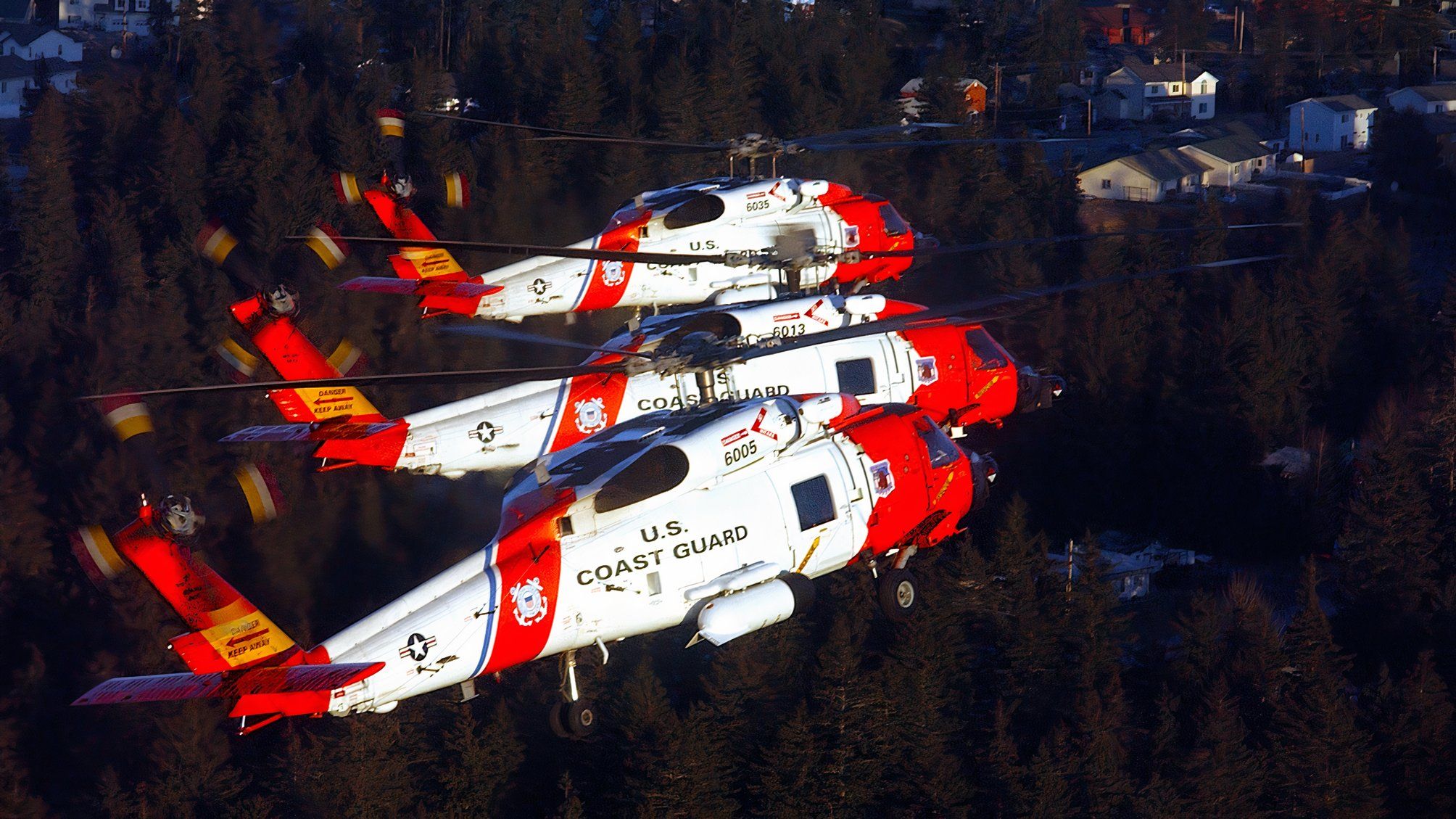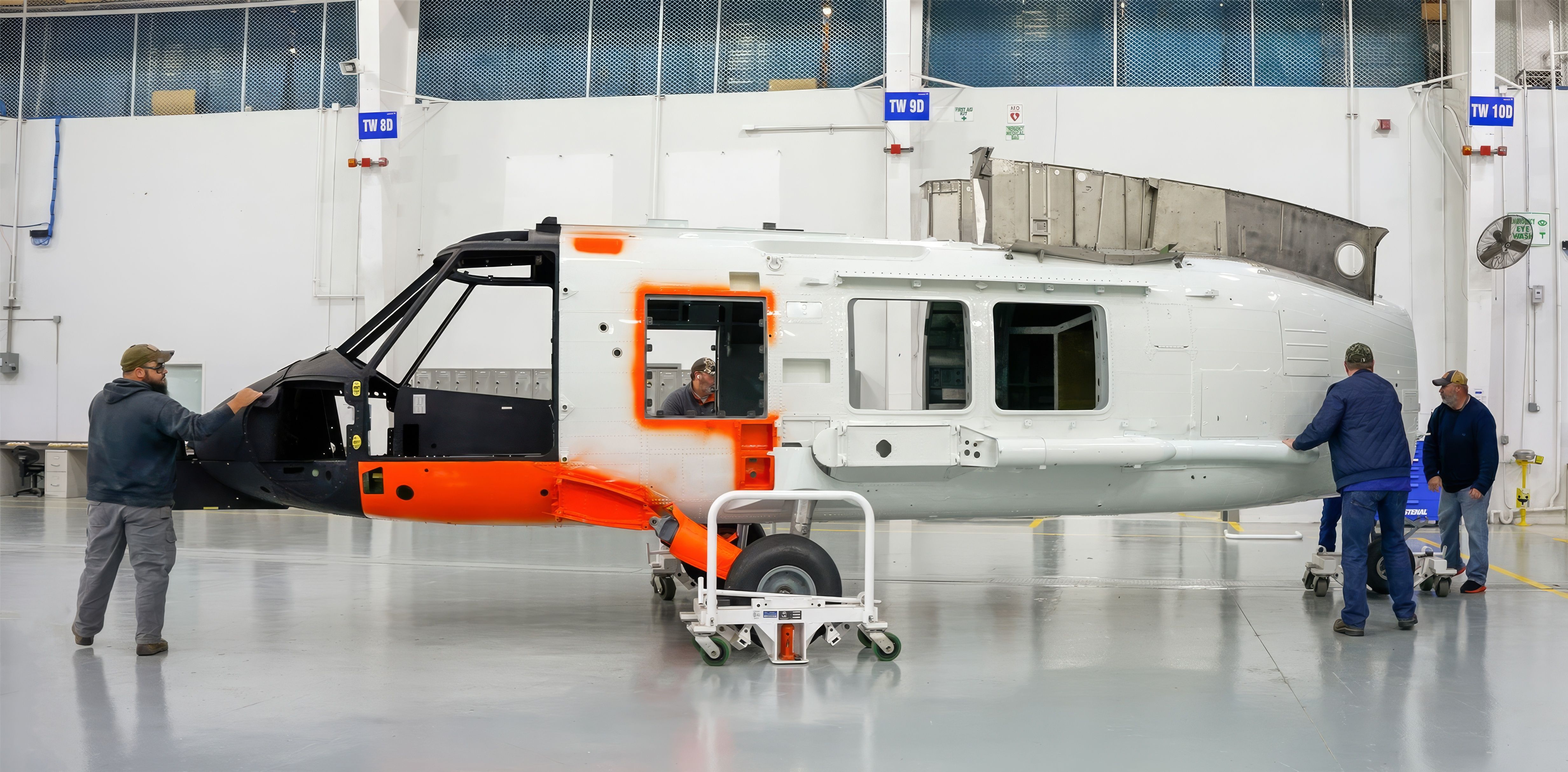Summary
- Sikorsky to recapitalize US Coast Guard MH-60Ts with structural renewals & advanced components.
- Strategy aims to extend MH-60T service life at reduced cost compared to new helicopter purchases.
- US Navy contributes retired airframes to transition 8 Coast Guard stations to MH-60T Jayhawks.
The
US Coast Guard
is seemingly facing a crisis with their 45 Sikorsky MH-60T Jayhawk helicopters nearing service hour limits, but Sikorsky, now a Lockheed Martin company, has already been working on a fix. The fix continues in the history of US maritime
helicopters
in several significant ways.
Original MH-60T Jayhawks nearing limits
In an August 30 Forbes news report, news broke that the US Coast Guard’s medium-range search and rescue helicopter, the MH-60T Jayhawks, had their service hour limit cut from 20,000 flight hours to 19,000 flight hours out of concern for structural life flying close to saltwater and hoisting rescuers & rescuees. Although the MH-60Ts have flown collectively over 730,000 hours and saved no less than 11,900 lives – the helicopters’ age is showing. With 90% of the US Coast Guard MH-60T Jayhawk fleet past 16,000 flight hours and flying around 800 flight hours annually – the flight hour cliff is fast approaching for 90% of the US Coast Guard’s workhorse helicopters, of which the service has 44 on-hand.
Additionally, the US Coast Guard wants to retire the shorter-range Airbus HH/MH-65 Dolphins in service since the early 1980s. Please review our June 2024 guide to the US Coast Guard’s search and rescue aircraft for more information:
One can also watch a MH-60T Jayhawk rescue operation:
With that, there is hope for the US Coast Guard as there is a strategy to recapitalize the service’s helicopter fleet. Namely, have Sikorsky build new H-60 airframes and recapitalize retired US Navy H-60 airframes.
Sikorsky and the US Coast Guard’s strategy to extend flight time
The recapitalization strategy to buy time was initiated by the US Coast Guard and Sikorsky, the original manufacturer of the MH-60Ts and now part of the Lockheed Martin corporation family. This strategy allows the US Coast Guard to have renewed structures from Sikorsky and the US Navy to put back in all dynamic (moving) components, digital cockpit, mission systems, and engines – much more than current civilian efforts to restore H-60s. Additionally, according to a July 23, 2021, Helis.com report, the rebuilt MH-60Ts will receive new main rotor blades that can be electronically folded and electrical wire harnesses to ensure the helicopter can perform for years to come.
Photo: Sikorsky | Lockheed Martin
It’s not the same as a new MH-60T or vertical lift aircraft that can meet the US Coast Guard’s unique needs, as explored in a previous Simple Flying article. Still, according to the US Coast Guard Acquisition Directorate in a January 23 statement, this strategy will provide between 12,000 and 20,000 hours of available service life. Additionally, the cost is $374 million, much reduced than buying 45 new MH-60Ts with all the add-ons like a digital cockpit and new hoists.
Looking at the US Navy’s contribution
Additionally, the US Navy—which has retired HH-60H and SH-60F Seahawk maritime helicopters after a mere 12,000 service hours—is donating airframes to the effort. The HH-60Hs were former combat search and rescue (CSAR), naval special warfare (NSW), and anti-surface warfare (ASUW) helicopters, with the overwhelming majority retired by 2016. Meanwhile, the SH-60Fs were former helicopters specializing in anti-submarine warfare, with the last SH-60F squadron also transitioning in 2016.
Photo: Seaman Andrew Schneider | U.S. Navy
The same bare-bones H-60 design exists and lends itself to recapitalization to MH-60T standards for the US Coast Guard’s needs for search and rescue, border patrol, and other maritime missions as the US Coast Guard needs. By recapitalizing US Navy Seahawk hulls for the Jayhawk mission, this allows the US Coast Guard to:
- Allow for the transition of eight US Coast Guard air stations around the United States to a fleet of solely Sikorsky MH-60T Jayhawks with longer range and more capacity, thereby honorably retiring the Airbus HH/MH-65 Dolphins. Coast Guard Air Stations Kodiak, Borinquen, Traverse City, and New Orleans have already transitioned.
- Grow the Jayhawk fleet by at least 36 helicopters, with additional helicopters as an option.
- Create a single fleet of US Coast Guard helicopters, saving money by standardizing maintenance, spare parts, and training.
- Reuse helicopters already paid for by taxpayers instead of placing them in mothballs.
About the Sikorsky MH-60T Jayhawk
According to the US Coast Guard, the Sikorsky MH-60T Jayhawk comes with these characteristics:
- Length: 64 feet 10 inches
- Rotor Diameter: 53 feet 8 inches
- Height: 17 feet
- Maximum Weight: 21,884 pounds
- Cruise Speed: 170 knots
- Range: 700 nautical miles
- Service Ceiling: 13,000 feet
- Endurance: 6.5 hours
- Crew: four
- Common avionics architecture system of digital glass cockpit instruments similar to those installed on the Coast Guard’s fixed-wing aircraft
- Surface search radar and electro-optical/infrared sensors
- Engines standard with the Department of Defense’s H-60 fleet
- Five multifunction display screens
- Sensor and hoist cameras
- Integrated traffic collision avoidance system
- 7.62 mm machine gun for firing warning shots and a 7.62 mm shoulder-fired weapon for precise targeting, such as disabling engines on noncompliant go-fast vessels, can be installed.
MH-60T Jayhawks recapitalized for future service
In short, the MH-60T will serve as a more efficient platform for the US Coast Guard deep into the 2040s. However, as the aforementioned Forbes article mentioned, plans to replace the MH-60Ts with the winner of the US Army’s Future Vertical Lift Program as intended are likely now impossible as the Bell V-280 Valor tilt-rotor won, which may not meet US Coast Guard requirements for things such as landing on their cutter patrol vessels.
However, the US Coast Guard has yet to test the Valor. Additionally, the Sikorsky H-60 production line is still in operation, and the US Navy has yet to choose an H-60 replacement, being pleased with the fleet’s MH-60R and MH-60S second-generation Seahawks. The
US Coast Guard
is also very happy that the MH-60T Jayhawks meet their requirements.
With the US Navy donating some of her honorably retired first-generation Seahawks for US Coast Guard Jayhawk recapitalization and some new airframes being built also; the legacy of Sikorsky’s Seahawks and Jayhawks in United States service will continue deep into the 2040s. As Sikorsky President Paul Lemmo. shared in a November 30, 2023 statement,
“We congratulate the Coast Guard ALC for the tremendous work it’s done to keep the Jayhawk fleet operating for decades. Equally, we applaud the Coast Guard aircrews, whose bravery and skill flying these rugged aircraft into extreme conditions over land, lakes and sea have saved thousands of lives.”



![919799 - HH-60H Sea Hawk flies at sunset [Image 8 of 13]](https://static1.simpleflyingimages.com/wordpress/wp-content/uploads/2024/09/919799.jpg)
![2711437 - Jayhawk pilots [Image 5 of 5]](https://static1.simpleflyingimages.com/wordpress/wp-content/uploads/2024/09/2711437.jpg)